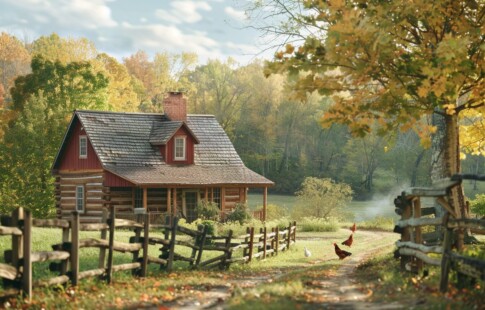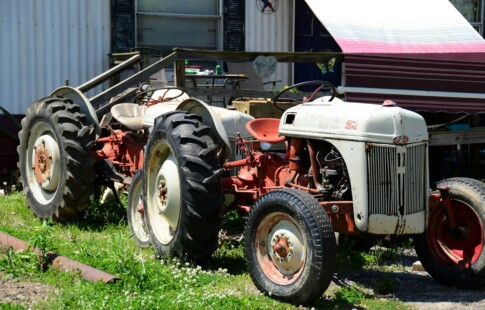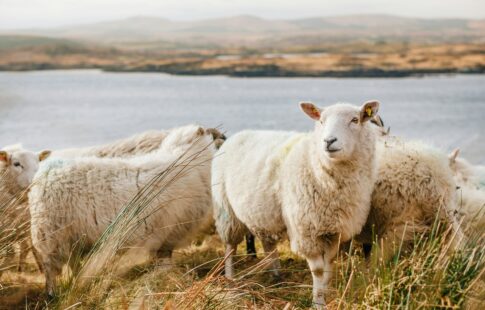
What Are Planting Zones? Find Your Plant Hardiness Region
We are reader-supported. When you buy through links on our site, we may earn affiliate commission.
Whether you have a small flower garden or you grow your own crops for sustenance all year round, you’re dependent on your region’s planting zone. Not sure how to navigate your unique climate? Don’t worry! Check out our guide on U.S. planting zones to learn everything you need to know about growing plants that will thrive in your backyard.
What Is a Planting Zone?
As anyone who has planted too early in the season and seen their seedlings killed by frost knows, not all plants can thrive in every climate. In fact, most plants and flowers require specific temperatures and weather conditions in order to grow at all.
Planting zones, also known as hardiness zones, are how regions are defined by temperature. In the U.S., farmers and gardeners typically rely on the U.S. Department of Agriculture (USDA) Plant Hardiness Zone Map, which establishes 13 regions that are based on the area’s average minimum temperature in winter in 10-degree increments. Each zone is further broken down into half-zones, labeled “a” and “b” zones.
These zones stretch across the U.S. Some cover large swathes of the country — like the relatively moderate Zone 6, which winds its way from the East Coast to the West Coast — while others are rare and only occur in isolated areas with more extreme weather.
How to Use Your Planting Zone to Your Advantage
While many factors will inform what and when you plant and how you care for your garden, planting zones are an excellent place to start.
The hardiness zones determine the type and level of durability a plant needs to survive in that particular area. While it’s less of a concern for annual plants that complete their entire lifecycle in one year, perennial flowers, vegetables and other plants that come back year after year must be able to survive the winter. Using the planting zone map to pick the right seeds for your climate can make a huge difference in whether you need to start from scratch next year or not.
When plants grow in their optimal climates, they thrive. You’ll have fewer problems with disease, freezing, overheating, over- or under-watering and more. Saving time and money is a major advantage as well. For example, when you select the right plants, you won’t have to buy and plant more seedlings next season to replace the plants you lost during last year’s hard winter.
Keep in mind that planting zones are not definitive markers. While they’re based on average temperatures for a region, there may be pockets of microclimates that experience different temps or weather conditions. Using planting zones as a general guide will be more effective than swearing by their total accuracy.
The USDA Plant Hardiness Zones
The first USDA Hardiness Zone map was published in 1960, and since then, it has been updated several times to reflect new data and changes in weather and climate patterns. The 2012 map is the current standard and its 13 zones inform gardeners, landscapers, farmers and other agriculturalists about planting regions.
1a and 1b
Zone 1 is the coldest region, representing an average annual minimum temperature of below -50 degrees Fahrenheit. While few very areas in the U.S. are within the 1a or 1b planting zones, certain parts of northern Alaska experience these freezing average temps. Only the most rugged plants survive — let alone thrive — in Zone 1.
2a and 2b
In Zone 2, the average minimum temperature falls between -50 and -40 degrees Fahrenheit — 2a represents the -50 to -45 range while 2b is -45 to -40. When it comes to the U.S., Zone 2 is still only found in Alaska, which is several hundred miles north of the continental U.S.
3a and 3b
With Zone 3, gardeners and farmers in the continental U.S. begin to see more useful data for their crops — though it’s still a very cold region. Spanning -40 to -30 degrees Fahrenheit, Zone 3 spans across the northernmost regions of Wisconsin, North Dakota and Montana, with a few small pockets in New England, including Main and New York.
4a and 4b
Zone 4 ranges between -30 and -20 degrees Fahrenheit — 4a is -30 to -25 and 4b is -25 to -25 degrees. Prevalent across the northern edge of the continental U.S., from Montana to Maine, Zone 4 also stretches down along the Rocky Mountains as far as Colorado.
5a and 5b
Zones 5a, from -20 to -15 degrees Fahrenheit, and 5b, from -15 to -10 degrees Fahrenheit, take up a significant portion of American farmland in the Midwest.
6a and 6b
The final zone with an average of below-zero winter temperatures, Zone 6 represents minimum temps of -10 to 0 degrees Fahrenheit. It’s the first zone that stretches all the way from one coast to another, claiming parts of New England, the Midwest, the Rocky Mountains and the Pacific Northwest.
7a and 7b
Zone 7 is a moderate climate that occasionally sees below-zero temperatures in the winter. From 0 to 10 degrees Fahrenheit, Zone 7 is a great place for most vegetables with a medium-to-long growing season.
8a and 8b
It’s starting to get warmer once you reach Zone 8, which has an average minimum temperature of 10 to 20 degrees Fahrenheit. It stretches across much of the South, from North and South Carolina to the middle of Texas.
9a and 9b
Zones 9a and 9b, which together encompass 20 to 30 degrees Fahrenheit, is one of the last planting zones in the continental U.S. Zone 9 makes up parts of central Florida, southern Louisana and Texas, and much of California.
10a and 10b
Now things are really heating up — only a few areas in the continental U.S. are hot enough to meet the Zone 10 criteria. A few spots in southern Florida and California have an average minimum temperature of 30 to 40 degrees Fahrenheit.
11a and 11b
At 40 to 50 degrees Fahrenheit, Zone 11 is only present in parts of Hawaii and a small part of Puerto Rico. Tropical plants are the only things that thrive in this warm weather all year round.
12a and 12b
Zone 12 makes up most of Puerto Rico and parts of Hawaii. With 50 to 60 degrees Fahrenheit temps even in winter, this tropical climate is best for plants that can throw in hot weather.
13a and 13b
The hottest planting zone of all, Zone 13 is for regions from 60 to 70 degrees Fahrenheit minimum temps. That’s hot, hot, hot — and only present around Puerto Rico and a few small pockets of Hawaii.
Planting Zones in the U.S.
Every plant requires different types and levels of care. While planting zones can only tell you so much about the region, they’re a great guide for picking the best plants to thrive in your current climate.
Share on
Like what you read? Join other Environment.co readers!
Get the latest updates on our planet by subscribing to the Environment.co newsletter!
About the author
Steve Russell
Steve is the Managing Editor of Environment.co and regularly contributes articles related to wildlife, biodiversity, and recycling. His passions include wildlife photography and bird watching.





